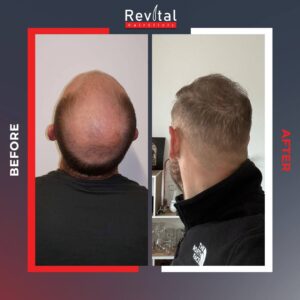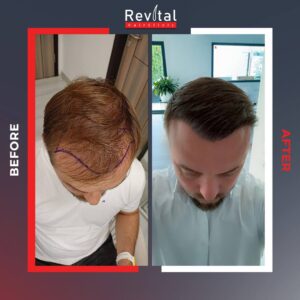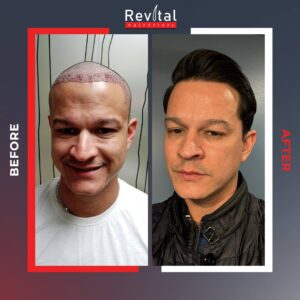What are the Differences Between DHI and FUE Hair Transplantation?
When considering a hair transplant, many patients often wonder about the best technique for their specific needs. The two most popular and advanced methods today are FUE (Follicular Unit Extraction) and DHI (Direct Hair Implantation). Both techniques are minimally invasive and offer excellent results, but they differ in several key aspects.
In this article, we will explore the main differences between FUE and DHI hair transplantation, helping you understand which method might be the best fit for you.
1. Extraction Method: FUE vs. DHI
Both FUE and DHI begin with the extraction of hair follicles from a donor area, typically the back or sides of the scalp. However, the way follicles are removed and the tools used differ:
FUE (Follicular Unit Extraction):
- In FUE, individual hair follicles are extracted one by one using a small, circular punch tool.
- The follicles are carefully removed from the donor area and then prepared for implantation.
DHI (Direct Hair Implantation):
- In DHI, the extraction process is similar to FUE, but the main difference lies in the implantation.
- Follicles are extracted in the same manner as FUE, but instead of creating incisions in the recipient area first, the follicles are implanted directly using a special Choi pen.
Key Difference: The extraction technique is quite similar in both methods, but DHI uses the Choi pen for implantation, which allows for more precision and control over depth and angle.
️ 2. Implantation Process: FUE vs. DHI
The main difference between FUE and DHI lies in the implantation phase. This phase determines how the hair follicles are placed into the recipient area.
FUE:
- In FUE, small incisions or slits are first made in the recipient area to receive the transplanted follicles.
- The extracted follicles are then inserted into these incisions, with care taken to follow the natural growth direction of the hair.
DHI:
- In DHI, no incisions are made prior to implantation. The follicles are inserted directly into the scalp with a Choi pen.
- This method allows for greater precision, as the surgeon can control the exact depth, angle, and direction of each follicle’s placement in one continuous step.
Key Difference: DHI eliminates the need for creating incisions, while FUE requires slits to be made before follicles are implanted.
⏳ 3. Recovery Time: FUE vs. DHI
Recovery time is an important consideration for anyone undergoing a hair transplant. While both FUE and DHI have relatively short recovery periods compared to older methods, there are subtle differences in healing times.
FUE:
- FUE patients generally experience minimal discomfort and can return to normal activities within 2–3 days.
- Some minor swelling or redness may occur at the transplant site, but this usually resolves in about a week.
DHI:
- Because DHI is more precise and causes less trauma to the skin, the recovery time is typically even faster than FUE.
- Many patients report feeling minimal discomfort and can resume light activities after 2 days, with most swelling or redness subsiding within 3–4 days.
Key Difference: DHI tends to offer a slightly faster recovery due to less scalp trauma during the implantation phase.
4. Precision and Results: FUE vs. DHI
Precision and the natural appearance of the results are crucial factors for a successful hair transplant.
FUE:
- FUE allows for excellent results with natural-looking hairlines, as the surgeon has full control over the direction and angle of each graft.
- However, due to the method of making incisions first, there is a possibility that slight imperfections can occur if the slits are not made in the optimal direction.
DHI:
- DHI offers greater precision as the Choi pen allows for the immediate placement of follicles without making incisions.
- This precise method helps achieve a more dense and natural-looking result, especially in areas where the hairline or density needs to be more refined.
Key Difference: DHI allows for more precise placement of follicles, leading to potentially denser, more natural-looking results, especially in delicate areas like the hairline.
5. Cost: FUE vs. DHI
Both FUE and DHI are premium techniques, but the cost can vary slightly depending on the clinic, the number of grafts needed, and the complexity of the procedure.
FUE:
- FUE is typically less expensive than DHI because it is a more widely used and established technique.
- The cost may depend on the number of grafts, the clinic’s reputation, and the surgeon’s experience.
DHI:
- DHI generally costs a bit more than FUE due to the use of specialized tools (Choi pen) and the more intricate nature of the technique.
- The increased cost reflects the advanced precision and shorter recovery time that DHI offers.
Key Difference: DHI usually comes at a higher price point because of the tools and advanced nature of the method.
⚕️ 6. Which One is Right for You? FUE or DHI?
Choosing between FUE and DHI depends on several factors, including the desired result, your budget, and your specific hair restoration needs. Here’s a summary to help you decide:
Choose FUE If:
- You are looking for a more affordable option.
- You need a large area to be treated.
- You don’t mind a slightly longer recovery time.
Choose DHI If:
- You are looking for maximum precision and control over the hair placement.
- You want a shorter recovery time and less scalp trauma.
- You need fine detailing (e.g., hairline restoration or beard/eyebrow transplants).
Final Thoughts
Both FUE and DHI offer high-quality results, but they differ in the way follicles are extracted and implanted, as well as in their precision, recovery time, and cost.
If you’re looking for natural, long-lasting results with minimal downtime, DHI might be the best choice for you. However, if you’re seeking a slightly more affordable option with great results, FUE remains an excellent choice.
At Revital Hair Clinic, we offer both FUE and DHI techniques tailored to your needs. Our experienced surgeons will help you choose the right method based on your goals and hair restoration requirements.
Book a consultation today, and take the first step towards a fuller, more confident look!
Revital Hair Clinic © 2024












Leave a Reply